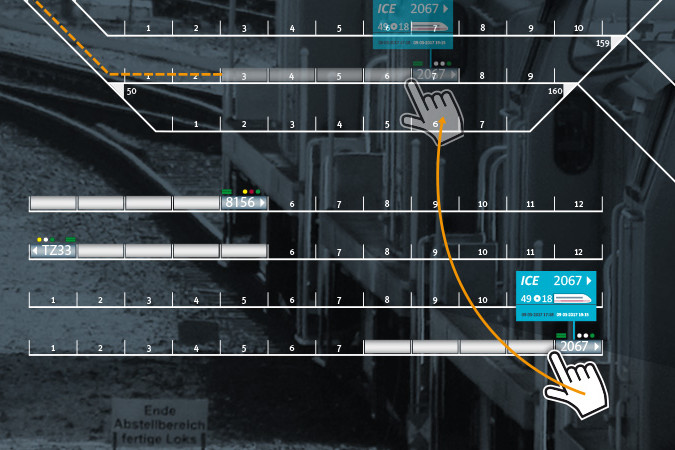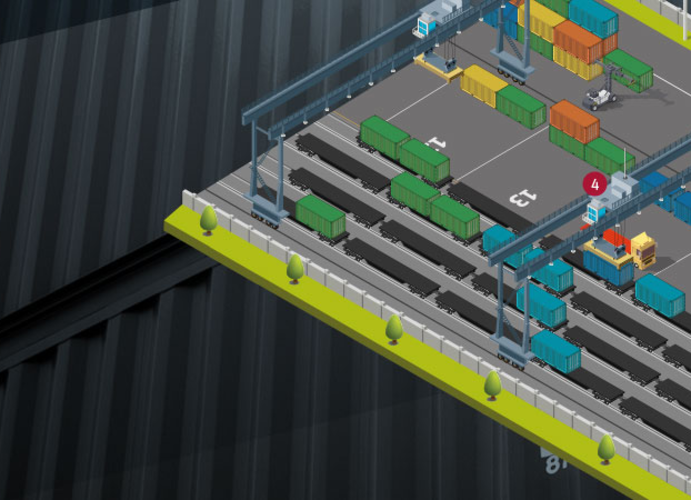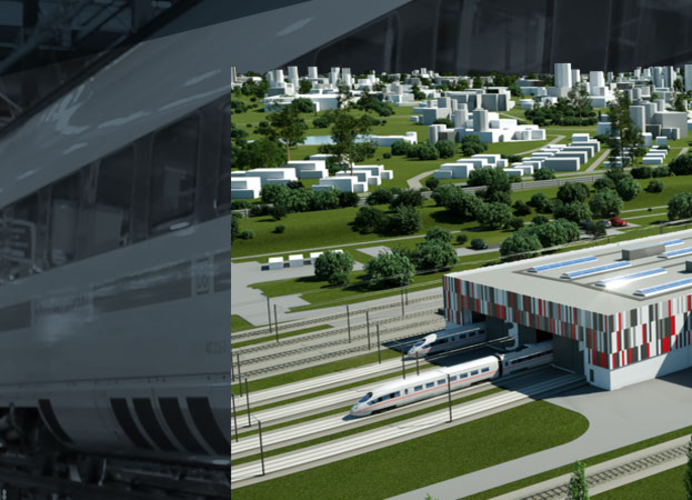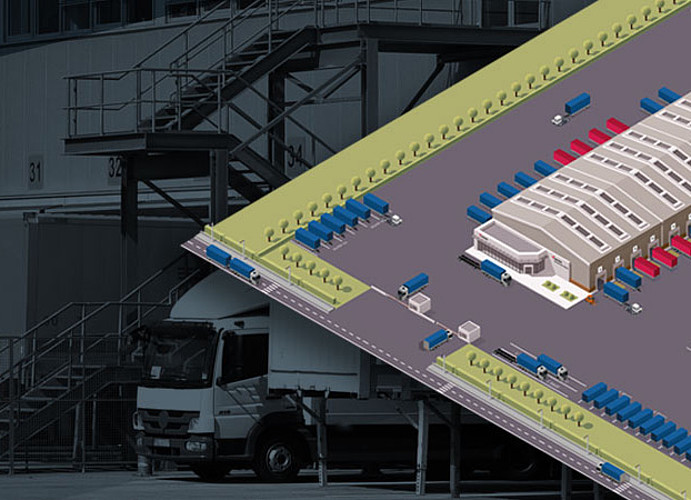Economical and technically perfect

The scheduling system is used for computer-aided vehicle dispatching within the depot area, plant station or other stabling areas. It is a graphical operating and display system for the dispatching and visualization of these track systems.
This system can be based on the control computer of the marshalling yard interlocking and communicate bidirectionally. Relevant status data from the marshalling yard interlocking are read, visualized and route requests are transmitted from the dispatching system to the interlocking.
Alternatively, DISPO can also be used autonomously without an interlocking to provide an overview and manage track contents.
How DISPO works
The dispatching system consists of the overview with the track diagram, individual detailed views per track area, a logbook and various dialogs.
The entire plant is shown schematically on the display screens. The system enables the display of the condition of the plant and the location of the vehicles on the workshop premises in graphic overviews. In this way, the operator can make route requests at the marshalling yard.
The track diagram shows the current distribution of rail vehicles in the track area. Train movements can be initiated by drag-and-drop or initiated by click and downstream dialog.
The aim of the Berghof dispatch system is to identify and locate all trains. The identification (vehicle number) and associated information (number of wheel axles, condition, etc.) are transferred to the dispatching system from SAP, for example. The interlocking is responsible for releasing the track.
Your advantages
-
Coordinated and optimized coordination in the operating sequence and higher safety
-
Combining vehicle dispatching and interlocking – just one user interface
-
All trains identifiable and locatable
-
Central monitoring, planning and control of driving processes in the marshalling yard
-
Convenient data transfer through interface to external systems (e.g. SAP for importing train and vehicle data)
-
Holistic optimization of shunting operations
-
Reliability due to replacement system
-
Communication with external interlocking possible, e.g. control EBP for train number transmission with TDS (train number message for entries and exits)
-
Enables automatic entries into the depot area by automatic track switching and selection of free tracks in the depot
Complete control through clear display
The schematic plant plans, the designations of the various localities and equipment, and the color and symbolic coding shall be prepared in consultation with the plant manager and the administrator.
The schematic representation of the entire network includes:
-
Each train and vehicle number and its position indication on the track.
-
Each vehicle in the form of blocks that can be moved using a mouse, so that they represent the correct position within the factory premises. This is how the management and manning of the vehicles on the track are mapped. The limits for moving the blocks coincide with the physical limits where the axis counters are located. It is not possible to move a particular block beyond such a boundary.
-
Each siding and associated track connections.
-
A visual distinction between electrified and non-electrified tracks (if any).
-
The occupancy status of the tracks (free, occupied).
-
The route status (requested, created, switched).
-
The status display of the tracks and track zones.









